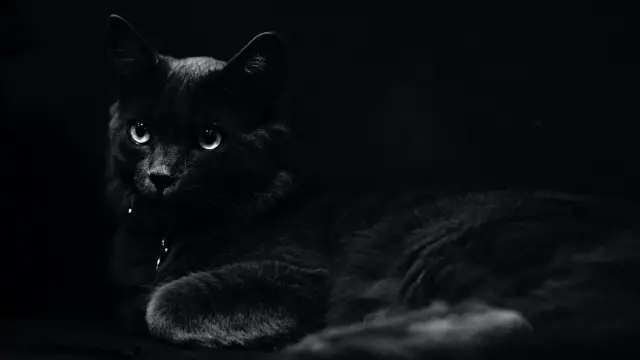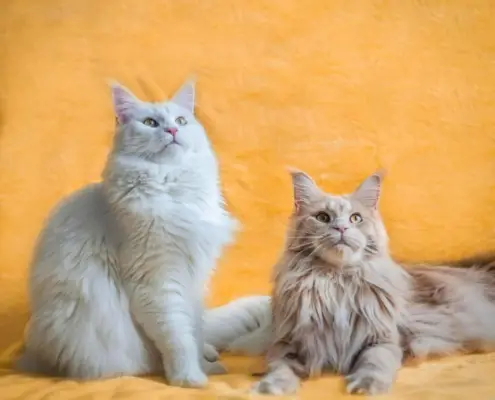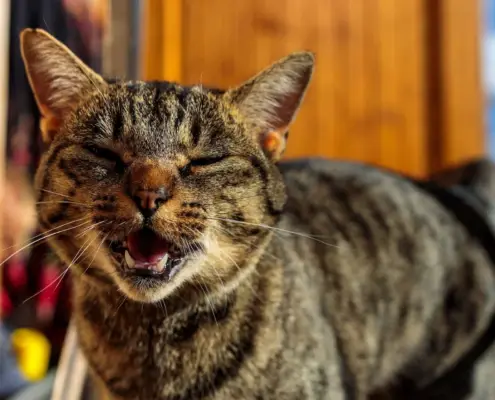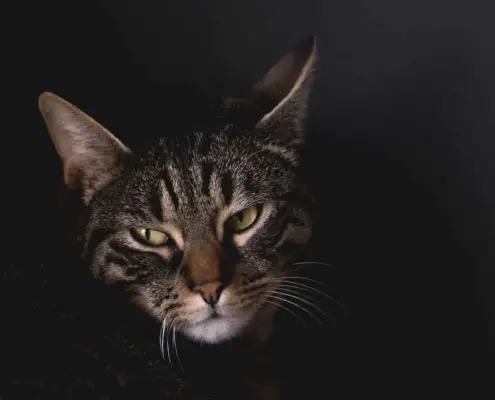
Cat eyes have long fascinated both scientists and cat lovers alike. Their ability to see clearly in low-light conditions and the phenomenon of their eyes glowing in the dark have sparked curiosity and wonder. In this article, we will delve into the science behind cat eyes, exploring the unique features that enable them to see in the dark and understand why they possess this captivating glow.
How do cat eyes work?
To understand why cat eyes glow in the dark, it is essential to first comprehend the basic functioning of a cat’s eye. Similar to human eyes, cat eyes contain a cornea, iris, lens, and retina. However, there are several distinct features that set cat eyes apart.
The anatomy of a cat’s eye
One of the key differences between human and cat eyes lies in the structure of the pupil. While our pupils are round, cat pupils are vertically elongated, resembling a narrow slit. This design allows for precise control of the amount of light entering the eye. When exposed to bright light, the cat’s pupil constricts to a tiny slit, minimizing the influx of light. Conversely, in low-light conditions, the pupil expands, allowing more light to enter and enhancing their vision in the dark.
Another unique feature of cat eyes is the tapetum lucidum, a reflective layer located behind the retina. This layer acts as a mirror, reflecting light back through the retina and increasing the amount of light available for visual processing. The tapetum lucidum is responsible for the mesmerizing glow seen in a cat’s eyes at night.
The role of the tapetum lucidum in cat eye glow
The tapetum lucidum plays a crucial role in the ability of cat eyes to glow in the dark. This layer contains numerous tiny crystals that reflect light, similar to a mirror. When light enters the cat’s eye, it passes through the retina and reaches the tapetum lucidum. The tapetum then reflects the light back through the retina, amplifying the signal and allowing the cat to see more clearly in low-light conditions.
Why do cat eyes glow in the dark?
The glow in a cat’s eyes is a result of a phenomenon called eyeshine. Eyeshine occurs when light enters the eye and is reflected back through the tapetum lucidum. The tapetum lucidum acts as a “light amplifier,” reflecting a higher percentage of light through the retina and increasing the sensitivity of the cat’s vision in low-light environments. This reflected light gives the eyes a luminous appearance, sometimes appearing as a brilliant green, yellow, or even red glow.
The science behind the reflection and refraction of light in cat eyes
The reflection and refraction of light in cat eyes are fascinating processes that contribute to their unique glow. When light enters the cat’s eye, it passes through the cornea and lens, which focus the light onto the retina. The tapetum lucidum, located behind the retina, reflects a portion of the light back through the retina. This reflected light increases the amount of available light for the retina to detect, enhancing the cat’s vision in low-light conditions.
Other animals with glowing eyes
While cat eyes are renowned for their glow, they are not the only animals with this captivating feature. Several other species possess eyes that emit a luminous glow in the dark. Among them are nocturnal animals such as owls, wolves, and alligators. These animals also have a tapetum lucidum, which aids in their ability to see clearly at night. However, the colors and intensity of their eyeshine may differ from that of cats due to variations in the structure and composition of the tapetum lucidum.
The evolutionary advantage of cat eye glow
The glow in a cat’s eyes serves a vital evolutionary purpose. It provides them with a significant advantage when hunting in the dark. By amplifying the available light, the tapetum lucidum allows cats to detect even the slightest movements of their prey and navigate their surroundings effectively. This enhanced low-light vision gives cats a profound edge over their prey, making them formidable hunters, even in pitch-black conditions.
Common misconceptions about cat eye glow
There are several misconceptions surrounding the glow of cat eyes. One common misconception is that cats have a light source within their eyes. In reality, the glow is a result of reflected light and not an internal illumination. Another misconception is that cat eye glow is always green. While green is the most commonly observed color, it can vary depending on the individual cat’s genetics and the angle of light. Some cats may exhibit a yellow or reddish eyeshine, adding to the mystique and diversity of this phenomenon.
Appreciating the marvel of cat eyes
In conclusion, the science behind cat eyes and their ability to glow in the dark is a fascinating subject. The unique structure of a cat’s eye, including the elongated pupil and the tapetum lucidum, allows for exceptional low-light vision. The glow in a cat’s eyes is a result of the tapetum lucidum reflecting and amplifying light, providing them with a distinct advantage in the dark. Understanding the science behind cat eye glow allows us to appreciate the marvel of these incredible creatures and the intricacies of their visual abilities.
Next time you find yourself admiring the mesmerizing glow in your cat’s eyes, take a moment to appreciate the remarkable science behind it.
If you enjoyed my article, I would appreciate you sharing it with your network.

Sima Ndlebe
Sima writes for CatBuzz. He is interested in Cats, Health and Fitness, and Entrepreneurship.
Published: 17 November 2023



